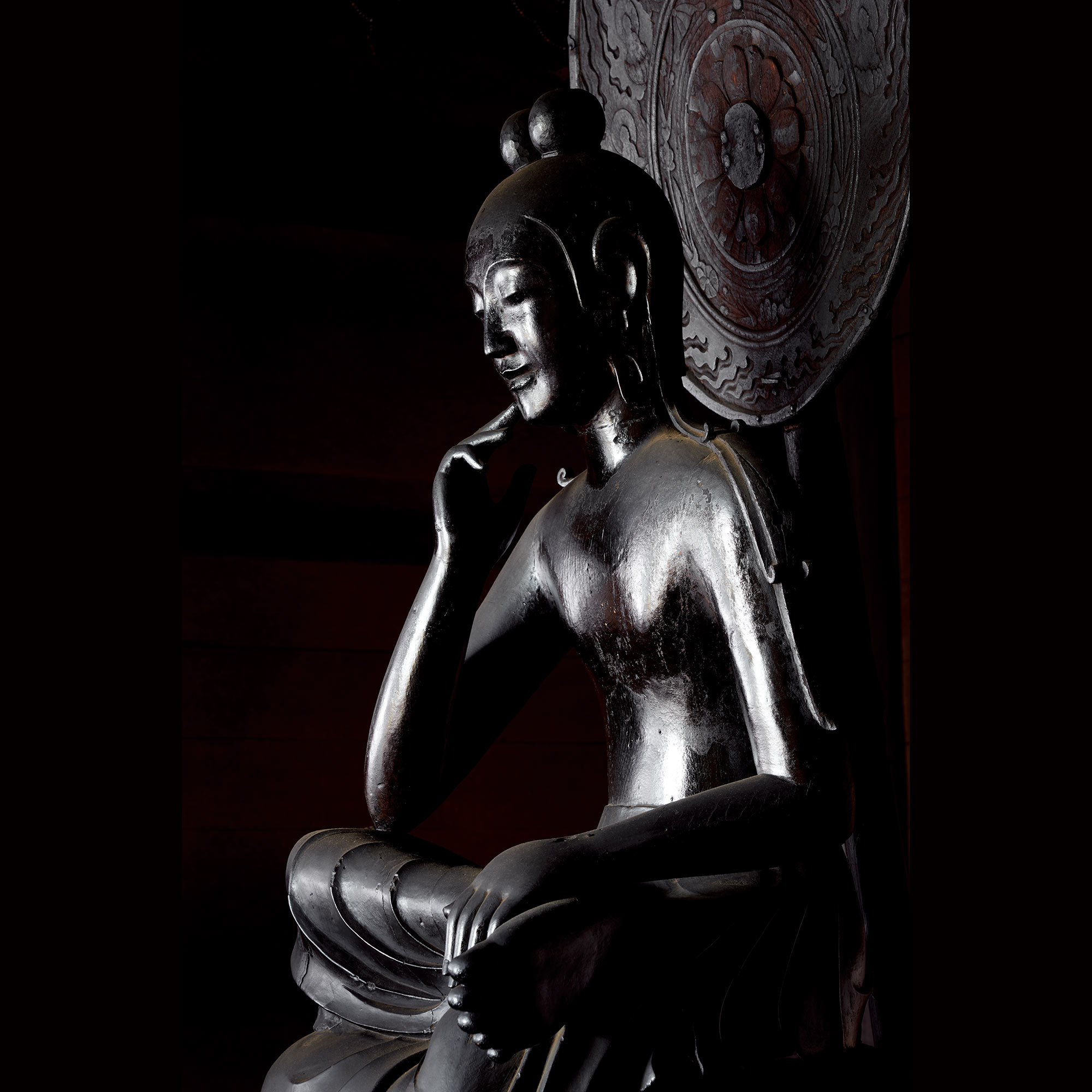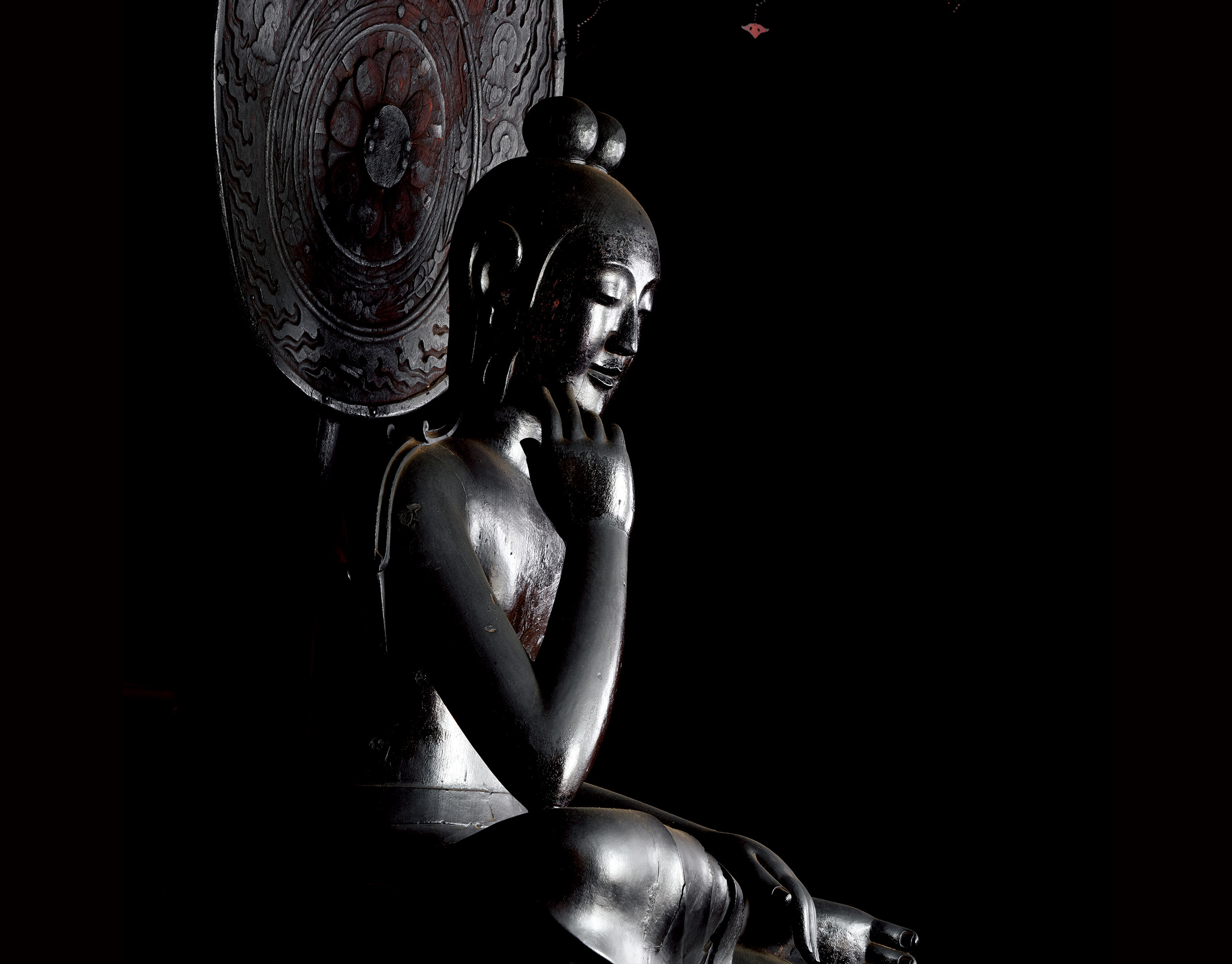Special
Exhibition
Manifestations of Mercy
Treasures from the Chūgūji Temple
Exhibition Period:
26 January 2021 (Tue) – 21 March 2021 (Sun)
Venue:
Special Exhibition Hall (3rd floor)
Opening Hours:
09:30–17:00 (Tuesdays–Sundays; last admission at 16:30)
Closed:
Mondays
Admission Fees:
Adults—1,800 yen
University and High School Students—1,200 yen
Junior High School and Elementary School Students—800 yen
Group tickets are not available for this exhibition.
For discounted tickets, please book visiting times in advance at the link below, and present
personal identification documents that reflect your birth date, such as your passport, health
insurance card, or driver’s license at the exhibition hall entrance upon request.
Admission is free for the following persons
(please book visiting times in advance at the link below, and present any necessary documents at
the exhibition hall entrance upon request):
Tickets:
Online tickets are available at ARTNE (please click the globe icon at the top right corner for English interface). Please note that we will be implementing entry limits on the number of visitors to prevent overcrowding in the exhibition hall. As such, all visitors should purchase tickets and book a visiting time slot online prior to their visit. We seek your understanding and cooperation. For queries, please see the FAQs.
Special Arrangements for COVID-19
- We request that all visitors purchase tickets and book a visiting time slot online prior to their visit. Please see the section on tickets above for details.
- Due to logistical reasons, visitors to this Special Exhibition will be required to view the Special Exhibition (third floor) before the Cultural Exchange Exhibition (fourth floor permanent exhibition). Visitors will be presented an admission card to the Cultural Exchange Exhibition upon entry to the Special Exhibition. Admission cards to the Cultural Exchange Exhibition are valid throughout the Special Exhibition period (until 21 March 2021). Visitors who wish to also view the Cultural Exchange Exhibition on the same day should book earlier time slots on ARTNE so that they have ample time to view both exhibitions before closing time.
- Audio guides are not available for this exhibition. However, exhibit labels are still available in Japanese, English, Chinese, and Korean. We seek your understanding and cooperation.
List of Works:
Exhibition Highlights
Treasures from Chūgūji
Feast your eyes on many fine works of Buddhist art from the halls of Chūgūji Temple, including a number of National Treasures and Important Cultural Properties.

Photo by Sasaki Kyōsuke
Pensive bodhisattva (National Treasure)
Asuka period, 7th century
Chūgūji Temple, Nara
With its gentle gaze and quiet smile, this bodhisattva has captured the hearts of many as Chūgūji’s main object of worship. While the temple traditionally names it as Chintamanichakra Bodhisattva, it was likely originally a statue of Maitreya Bodhisattva.

Image credits: Nara National Museum
(photo by Sasaki Kyōsuke)
Tenjukoku Embroidery (National Treasure)
Asuka period, 7th century
Chūgūji Temple, Nara
On display: 26 Jan–21 Feb 2021
This textile work depicts the Tenjukoku, the Buddhist realm of paradise into which Prince Shōtoku is said to have been reborn after his death. Originally commissioned in the Asuka period, it was later replicated in the Kamakura period by Chūgūji abbess Shinnyo. The current work was pieced together in the Edo period from remnants of both the original and the replica.

Standing Manjushri Bodhisattva (Important Cultural Property)
Kamakura period, dated 1269
Chūgūji Temple, Nara
Here is an unusual Buddhist statue that was created by sticking multiple layers of paper over a core made from Buddhist scriptures and scrolls. It may have been commissioned by Chūgūji abbess Shinnyo, who was responsible for restoring the temple in the Kamakura period.
Chūgūji Through the Years
Aside from displaying the many objects owned by Chūgūji, this exhibition also traces the history of the temple from its establishment in the seventh century, through its restoration in the thirteenth century by its abbess Shinnyo, up until it became designated an imperial temple (monzeki) around the late sixteenth to seventeenth century.

Image credits: Nara National Museum
(photo by Morimura Kinji)
Portrait of Nun Shinnyo (reportedly)
Muromachi period, 15th century
Chūgūji Temple, Nara
The subject of this portrait is allegedly the nun Shinnyo, who had discovered the Tenjukoku Embroidery and restored Chūgūji. Although the artwork originally depicted one of the Sixteen Arhats, the pale and gentle figure portrayed happened to resemble Shinnyo, leading later generations to believe it to be a depiction of her.

Image credits: Nara National Museum
(photo by Morimura Kinji)
Sliding doors decorated with birds and flowers
Edo period, 18th century
Chūgūji Temple, Nara
These sliding doors came from the elevated section of Chūgūji’s reception hall, where the highest ranked members of a gathering would have sat. The vividly colored birds and realistic flowers take after court furnishings, making them befitting of an imperial temple.
Images of the Pensive Bodhisattva and Maitreya: From Ghandara to Japan
The principle image of Chūgūji is a pensive bodhisattva, which is a type of Buddhist image with origins in Gandhara. This exhibition dedicates a section to introducing this type of imagery, tracing its roots and its eventual spread to Japan.

Meditation under a Tree
Gandhara, Pakistan, Kushan dynasty, 2nd–3rd century
Ryukoku Museum, Ryukoku University, Kyoto
Gandhara is known for being the birthplace of Buddhist images. Many temple stupas there bear carvings telling the story of Buddha’s life. The scene at the right is of Prince Siddhartha Gautama (the name Buddha was known by before attaining enlightenment), deep in thought as he watches a farmer working on a hot summer day.

Pensive bodhisattva
China, Northern Wei dynasty, 6th century
Eisei Bunko Museum, Tokyo
Square faces and neatly folded robes are characteristic of Chinese Buddhist sculptures created in the Northern Wei dynasty. This style was inherited by Japanese sculptor Kuratsukuri Tori, who went on to create many works considered representative of Asuka-period Buddhist sculpture.

Photo by Ochiai Haruhiko (Kyushu National Museum)
Pensive bodhisattva (Nagasaki Prefecture–Designated Cultural Property)
Korea, Three Kingdoms period, 7th century
Twenty-Six Martyrs Museum, Nagasaki
On display: 23 Feb–21 Mar 2021
This sculpture was worshipped as an image of Jesus Christ in Urakami, Nagasaki. The crown and robes on this figure tell us that it was a product of the Silla Kingdom in Korea. These features can also be found on the Pensive Maitreya Bodhisattva statue enshrined in Kyoto’s Kōryūji Temple, which has been designated a National Treasure.

Image credits: Tokyo National Museum
Pensive bodhisattva
Asuka period, 606 or 666
Collection of Hōryūji Treasures, Tokyo National Museum
This statue of a bodhisattva is seated on a shumiza, which is the seat of a buddha. This implies that this statue represents Maitreya, who is slated to achieve enlightenment and become the buddha of the future, succeeding Shakyamuni, the buddha of the present.

Image credits: Nara National Museum
(photo by Sasaki Kyōsuke)
Pensive Maitreya Bodhisattva
Asuka period, dated 666
Yachūji Temple, Osaka
Of all the pensive bodhisattva images in Japan, this is the only statue inscribed with Maitreya’s name. This Maitreya is plump and childlike, adhering to the style popular in the latter half of the seventh century.



